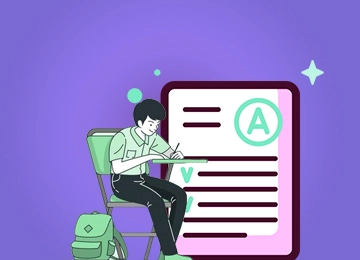
Search Assignments
Our Experts

Search Assignments

Customers Reviews
We have a weird relationship with exams because a significant part of our life is spent preparing for one or the other exam. Nonetheless, exams are essential to judge a student's ability and knowledge.
Value assignment has enrolled some of the leading subject experts in offering online exam solutions to our students looking for someone to do their exams online.
Exams are an excellent way for students to develop and instil a sense of responsibility. Also, the exam aims to improve the students' memory, revision skills, and personality. The test also motivates the students to perform better in the examination.
We give quizzes and tests to boost our confidence and prepare for more comprehensive tests in life. Although these tests are beneficial, most students usually have a traumatic experience with the written or oral forms of the tests. Every time we complete a round of tests, a million-dollar question pops up in our minds "Who invented the tests?" Let's dig into the history to find the answer to this question and learn some exciting information about the exam.

School exams were invented by Henry Fischel, a Jewish-German mathematician, in 1841. But, admittedly, the exam has been much longer than this! The first school exams took place in China about 2200 years ago when students were required to demonstrate their knowledge by correctly and rapidly tying various bows according to the teacher's question; Those who could not have to continue reading until they had mastered the skill and repeated any elements of instruction where the student demonstrated weaknesses.
According to historical data, the exam was invented as a concept in ancient China. The Sui dynasty introduced the Imperial Examination System or 'Royal Review' in 605 AD to recruit candidates for specific government posts. The system was supposed to select people based on merit rather than birth. Candidates, if eligible, will become part of a distinguished group of government officials led by Emperor Yang of Sui.
The Tang Dynasty introduced the concept of written examination to select candidates under Empress Wu Zetian. In addition, he introduced reforms to the royal review in which members of the aristocratic bureaucracy came from humble beginnings.
Exams were invented to answer multiple purposes.
The first purpose was to determine whether students should be promoted within the ranks of their profession. Still, the test was not introduced until the early 11th century to determine whether a person had become an educated person. After that, it was learned enough to be considered.
The second purpose of inventing the exam was to provide a means for students to show their knowledge of specific subjects. This allowed the formation of education and professional qualifications.
Partly because of the need for a better clergy, universities began to require that faculty members be self-tested for their knowledge to become professors or lecturers.
The third objective test was created to ensure that teachers who write research papers in modern times as part of their degree programs know what they are studying.
The fourth and final purpose of examinations was invented to determine the level of learning on a subject that students have achieved after completing specific courses at school or university. Exams also serve purposes such as helping instructors decide what material should be included in future courses and identifying students' strengths and weaknesses.
The exam was invented for all these reasons, but most importantly, it was a way for students to acquire some knowledge in their respective fields.
Both tests and exams are methods of testing the knowledge and learning of students. Following both the formats, a teacher needs to assign an appropriate grade based on the assessment of the results. However, rather than the similarities, some differences still set them apart.
Being one of the most well-known and sought-after educational institutions globally, the historic university conducts examinations for schools across England.
In the late 19th century, schools across England approached the universities of Cambridge and Oxford to issue standardised tests for male students across the country. In 1858, more boys could only take the exam.
On December 14, 1958, the first Cambridge Assessment was given to students to take tests in schools or churches. Subjects were similar to today's curriculum at institutions, including English, Mathematics, History, Geographic, Latin, German and French.
Similar to how exams are conducted today, these evaluations were administered and overseen by observers who travelled from Cambridge to the different parts of the country where the tests were conducted.
Fischel noticed that most of his students were failing the exam because they didn't clearly know what they needed to know. However, the examinees were expecting a lot more from him. He tried to give his students a better deal by asking them not to worry about the exam's content but to focus only on the question and how they were expected to answer it. He asked them to draw some pictures or use other devices to break the question into smaller pieces. Then, he gave them 10-15 minutes to do this, and after that, he asked them to explain what they did. He thought that this approach assisted students in breaking down complex questions, and later, they could understand better how to answer these questions. That way, even if they couldn't answer questions about the material they didn't know, they could find meaningfully through it.
The concept of testing and assessment has changed a lot over the years. Nowadays, assessment is used to describe the overall test. Unlike regular tests, holistic testing focuses on a complete visualisation rather than specific parts. Additionally, several different units are considered to form an overall picture of the candidate's true capabilities. These tests occur in colleges and while interviewing candidates to be considered for employment.
However, the comprehensive exams are generally entertaining and exciting. They are different from the routine tests that are usually offered. They can help you identify your strengths and areas where you can and should improve. An added benefit is that they help companies locate the most qualified talent.




No Comments